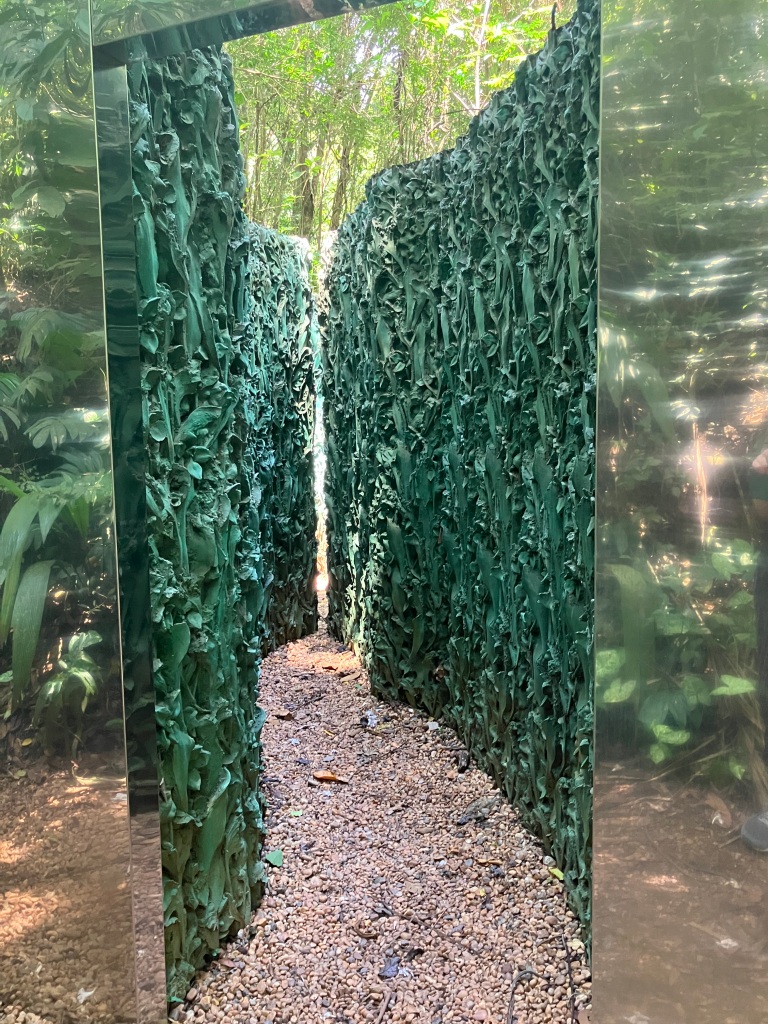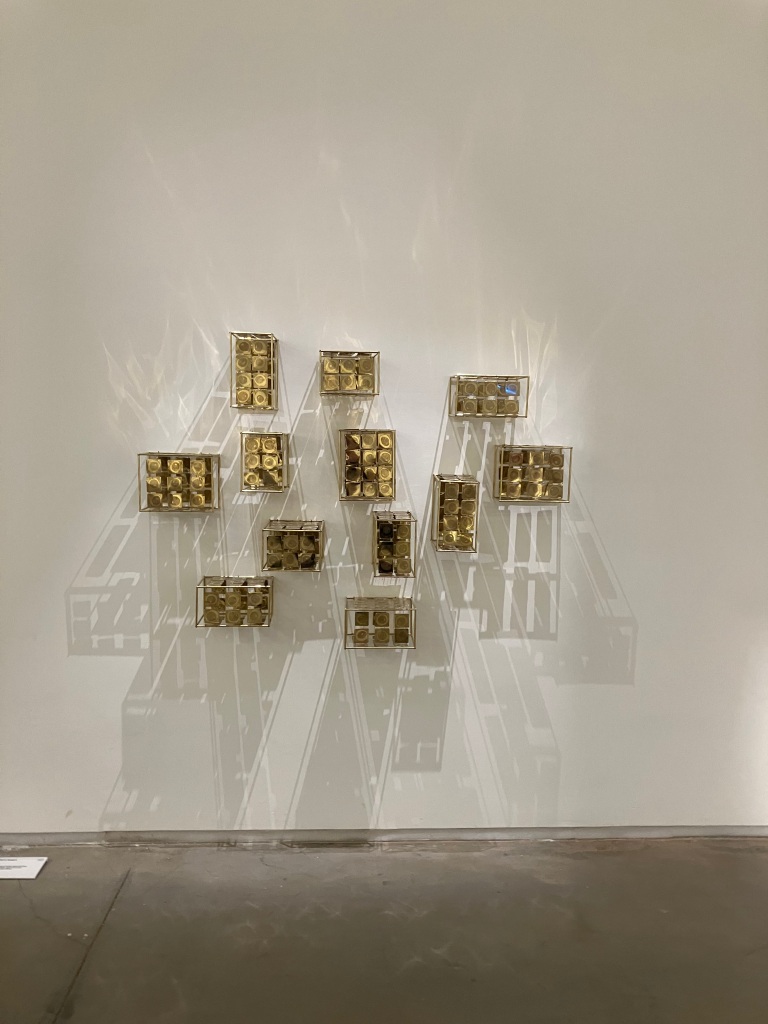I visited the Museu Inhotim while I was in Belo Horizonte. Although it was in Brumadinho, 60 km away, it was worth the trip – the museum has an officially approved travel agency and it was easy to book the bus ride and entrance fee through them.
Inhotim began when former mining magnate Bernardo Paz became very wealthy from his business interests (and was convicted of money laundering – and then the charges were dismissed) and decided to found an art gallery. I was expecting it to be like the Museo Jumex in Mexico City, founded by an incredibly wealthy Mexican man, which has a lot of really expensive art organized in a way that shows more of the monetary rather than aesthetic value of the pieces. I also thought it might be like Storm King, in upstate New York, which has a bunch of outdoor pieces.



The Museu Inhotim is a bit like both of these things – it has outdoor art – and it also, crucially, has indoor art galleries that have air conditioning. There were more women artists than I expected, which was a pleasant surprise, and a mix of Brazilian and international artists.
Some of the exhibits were really weird. There was an outdoor pool that I think you could swim in, and a place where you could plant a plant (I declined both opportunities). There was also an opportunity to draw nature (I accepted this).
There was one exhibit where I was lucky enough to get a free timed ticket simply because I went to the gallery early in my meanderings, and got a timed entry ticket for a few hours later. I realized why I needed this ticket once I entered – it was an individual experience that lasted 2 or so minutes, and then a small group experience that lasted another few minutes.

There was another gallery where you had to take your shoes off to enter the gallery only to find a room with balloons, a room with hammocks and an indoor pool. Apparently that art was inspired by cocaine.

This museum was a nice reminder that it is not only rich people of the past who engaged in social projects – but that much like projects of the past (public libraries, for example) they are not always designed with the entire public in mind (implicitly and explicitly). Here anyone could theoretically enter but it’s not accessible by regular public transportation, only shuttles or else multiple buses + walking, and it is free one day a week that is not the weekend. Today it is run by a private foundation and heavily sponsored by the Vale mining company (who also sponsored the history and culture museum in Belo Horizonte) but honestly considering the amount of companies in the US who pay approximately nothing in taxes and whose social projects involve planning for end times that they could, say, prevent if they paid taxes at 1970 rates, it was a breath of fresh air.

Pingback: Sucre, Bolivia | Rebecca J